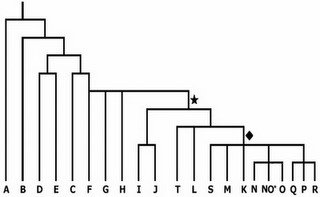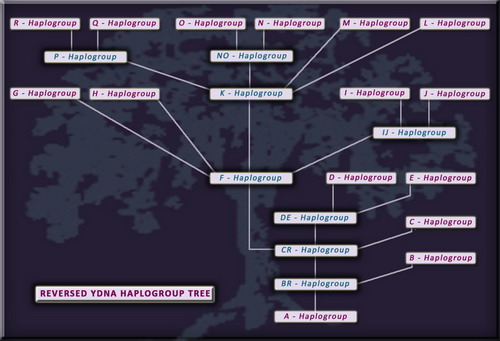BAMAD no.65
Brit-Am
DNA and
Anthropology Updates
Updates in DNA studies along with Anthropological Notes of general interest with a particular emphasis on points pertinent to the study of Ancient Israelite Ancestral Connections to Western Peoples as explained in Brit-Am studies.
Brit-Am
Research
Revelation
Reconciliation
The Brit-Am Rose
Official Symbol of Brit-Am

BAMAD no. 65
Brit-Am Anthropology and DNA Update
14 December 2009, 27 Kislev 5770
Contents:
Brit-Am Anthropology and DNA Update
1. Video: Murder of albinos in Tanzania
2. Brit-Am DNA Opinion Shared by Others. We are not Alone!
Leading Linguistic-Anthropology Scholar Holds Outlook on DNA "Evolution" similar
to that of Brit-Am
3. Comment on the Brit-Am DNA Service Proposal
1. Video: Murder of albinos in Tanzania
http://undercoverblackman.blogspot.com/2008/08/albinos-in-africa-catch-hell.html
2. Brit-Am DNA Opinion Shared by Others.
We are not Alone!
Leading Linguistic-Anthropology Scholar Holds Outlook on DNA "Evolution" similar
to that of Brit-Am
Contents:
(1) Background: The Opinions of German
Dziebel
as Compared tot hose of Brit-Am and Conventional DNA Science
(2) Letter from Cristian
Sildan
Drawing our attention to the opinions of German
Dziebel
(3) Wikipedia
Sources Explaining the Distribution of Y DNA
Haplogroups
C and Q
(4) Extracts from Correspondence by German
Dziebel
Outlining His Views
================================================
================================================
(1) Background: The Opinions of German
Dziebel
as Compared to those of Brit-Am and Conventional DNA Science
See diagrams.
Y chromosome (transmitted only be males) DNA haplogroups as explained by
conventional science
give a progression in alphabetical order.
ABCDEFG...PQR etc.
A is the simplest, R one of the most complicated ergo R evolved from A.
Brit-Am reverses the procession and says that R could just have easily have been
the first and others evolved from it
by a simple process of simplification, of discarding superfluous information.
A Russian born scholar named German Dziebel has proposed something similar.
German Dziebel specials in a multi-disciplinary approach to anthropology and
linguistics.
He says in effect that haplogroups C and Q are twin brother groups from the same
source and that other groups are later developments.
Haplogroups C and Q are both found together in the same Na-Dene populations. The
Na-Dene are an Amerindian linguistic group found in A|aska, Western Canada, and
in the south including the Navajo and Apaches. It is related to some of the
native languages of Siberia.
Conventional science puts Q and C as being very distant from each other, C being
what is considered an early type and Q one of the latest.
German Dziebel says that in effect Q is a direct offshoot of C without having
passed through any intermediate stages.
This corresponds with the Brit-Am outlook since R is close to Q and we propose
that R was a very early development with groups evolving
(through simplification) from it rather than it evolving from them.
Conventional science puts Q and R as both offshoots of P and the latest to
evolve whereas C is considered amongst the earliest.
The understanding of German Dziebel in our opinion is not that far from that of
Brit-Am.
This was brought to our attention by an e-mail of Cristian Sildan shown below,
===============================================
(2) Letter from
Cristian
Sildan
Drawing our attention to the opinions of German
Dziebel
Cristian Sildan: DNA
Dear Yair,
Peace.
I've followed your work for some time, and you might be up to something.
So far, it seams the DNA is probably the biggest issue about the biblical
origins of people.
Have you followed the Dienekes blog lately?
There's this article about the y-haplogroups, and in the commentaries there's
this guy German Dziebel who apparently works with people from Princeton like
Underhill and Rosenau, and they appear to be of the opinion that in fact it's
the Q haplotype that would be the oldest, with C following. They might be up to
something, maybe you should dig into that. As for me, I don't know, I'm no
specialist and I wait for the future to see more clearly.
But hope it helps.
Have a nice day.
===============================================
(3)
Wikipedia
Sources Explaining the Distribution of Y DNA
Haplogroups
C and Q
Sources:
Distribution of C
http://en.wikipedia.org/wiki/Haplogroup_C_(Y-DNA)
Haplogroup C attains its highest frequencies among the indigenous populations of
Mongolia, the Russian Far East, Polynesia, Australia, and at moderate frequency
in the Korean Peninsula and among the Manchus, it displays its highest diversity
among modern populations of India, and therefore it is hypothesized that
Haplogroup C either originated or underwent its longest period of evolution and
diversification within India or the greater South Asian coastal region.
It is believed to have migrated to the Americas some 6,000-8,000 years before
present, and was carried by Na-Den?speaking peoples into the northwest Pacific
coast of America.
Haplogroup C contains the polymorphism, very common in Central Asia, which is
believed to be that of Genghis Khan, spread wide during the Mongol Empire's
conquest of Eurasia.
The distribution of Haplogroup C is generally limited to populations of northern
Eurasia, eastern Eurasia, Oceania, and the Americas.
Distribution of Q
http://en.wikipedia.org/wiki/Haplogroup_Q_(Y-DNA)
This haplogroup contains many Siberians, Central Asians, and indigenous peoples
of the Americas. Haplogroup Q Y-chromosomes are also found scattered at a low
frequency throughout Eurasia.[1]
===============================================
(4) Extracts from Correspondence by
German Dziebel
Outlining His Views
German Dziebel said...
http://dienekes.blogspot.com/2009/11/
y-chromosome-diversity-human
-expansion.html
(1)
Apparently, now Underhill admits the possibility that E could have returned to
Africa from Asia. Also, how could America have been peopled by one of the
youngest haplogroups (Q) and one of the oldest haplogroups (C), with the oldest
found in the North, mostly among Na-Dene-speakers as well as among the Inuits? N
and O are phylogenetically between C and Q, and they are found in regions
adjacent to America. How come they aren't found there? The sister clade of Q,
namely R, has a very wide geographic distribution in Eurasia and Africa. If
America was peopled only 15,000 years ago, how come a sister clade of Q was in
Europe at 45,000 YBP? The supposedly oldest lineages, A and B, aren't found
outside of Africa: why weren't they carried out as a result of a population
expansion? How come the youngest haplotypes, Q and R, have the widest geographic
distributions, while the oldest haplogroups, with tens of thousands of years to
spread around, are so narrowly distributed? At the next phylogenetic level, C
and D aren't found in Africa, it means they arose outside of Africa. So where's
the connection between Africa and the rest of the world?
Despite the slew of genetic publications the phylogenies remain fishy and ad
hoc. I suspect the order of mutations is simply wrong.
Saturday, November 21, 2009 6:02:00 AM
(2)
Q and C represent the oldest split in the human Y-DNA phylogeny.
If we look at their distribution, they have the two largest geographic spreads:
from West Siberia to Tierra del
Fuego
and from American Southwest to Australia. Plus, interestingly enough, their
geographies are complementary: Q is all over America and it juts out into
Northern Asia, C is all over East Asia and Australasia and it juts out into
North America. So, apparently C branched off Q somewhere on North America or
North Asia. Notably enough, C and Q occupy the territories marked with the
greatest levels of linguistic diversity, which confirms the antiquity of these
haplogroups.
All other haplotypes
show geographic shrinkage, especially D, A, B, H (in India, with a subsequent
Roma offshoot in Europe), and L. This indicates that they are derived lineages,
which formed during a long period of isolation, genetic drift. Then they
reexpanded
but didn't have enough time to achieve the geographic range of Q and C.
Linguistic diversity in these areas is low again suggesting a shallow time
depth.
3. on the Brit-Am DNA Service
Proposal
RE: Brit-Am Now no. 1425
Hi Yair - think that the DNA Service would be fantastic - Shalom J Botha
South Africa
(b)
A Brit-Am DNA Service?
A suggestion has been made that Brit-Am offer a DNA Service. We would team up
with a DNA Testing Laboratory. They would do the tests and supply the results.
We would explain the results from a Brit-Am Lost Ten Tribes point of view. We
would also check the results for associated clustering. In many cases we would
be able to tell testees if they probably related to Ashkenazi or Sephardi Jews,
Irish Ancestral Groupings, in some cases Scottish clans, or other ethnic
groups. In some cases we could tell people what regions or family groups (even
family names) they probably descend from or at least are closely related to,
etc.
At the moment no definite steps have been taken in this direction but one never
knows.
It could be claimed that the relevant information could be supplied by anyone
who knows a little about DNA and is active on the Web.
This may be so but one could say the same about most things.
We could probably add a little edge of our own that for many would be well
worth the expenditure.
Also the whole procedure may require much more effort, energy, expertise, and
acceptance of responsibility and obligation than one would think.
BAMAD Archives
Join the Brit-Am Ephraimite Discussion Group
Just Send an
e-mail
with "Subscribe"
in the Subject Line
Main Page
Offerings and Publications
Return to
Question and Answer
Table of Contents



